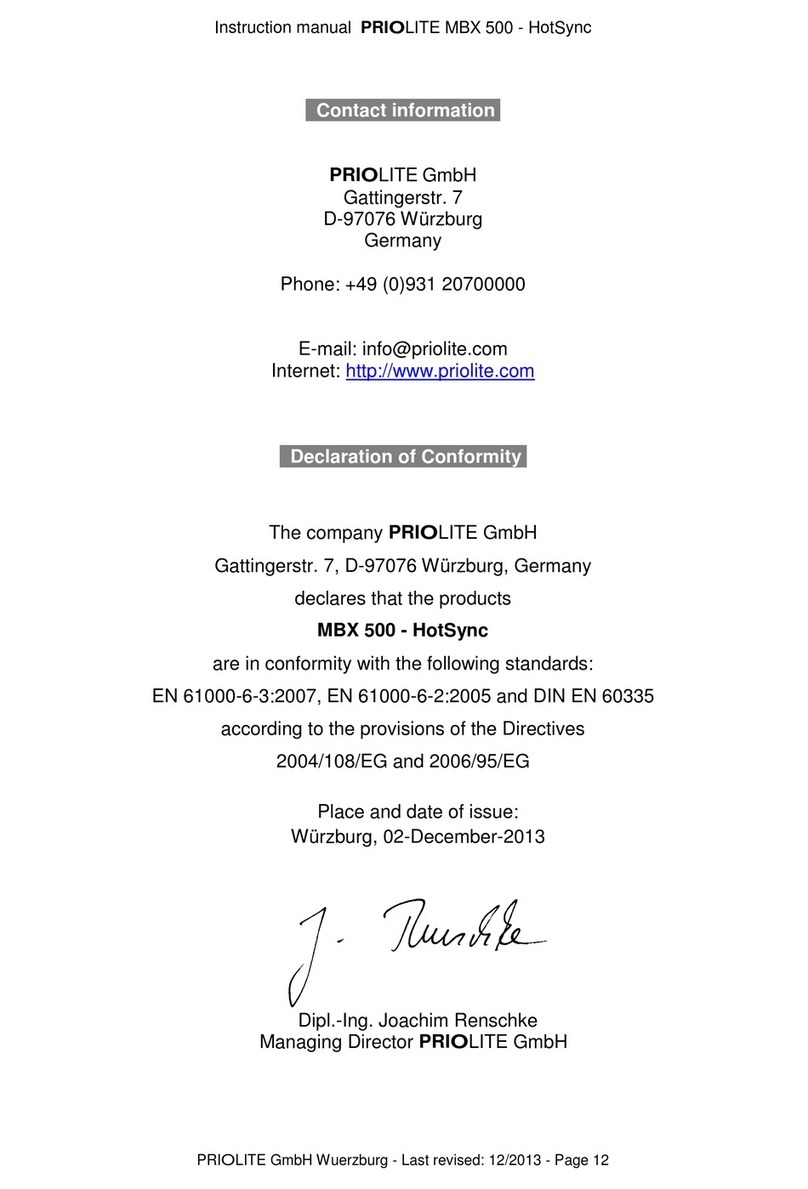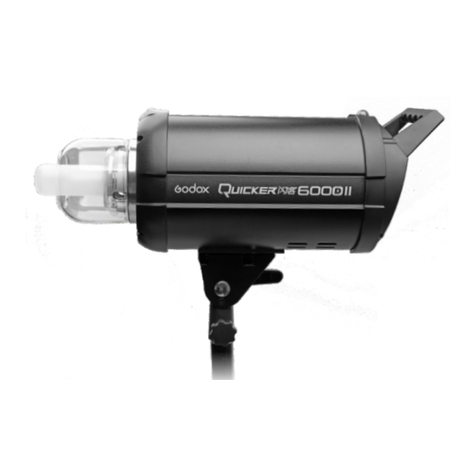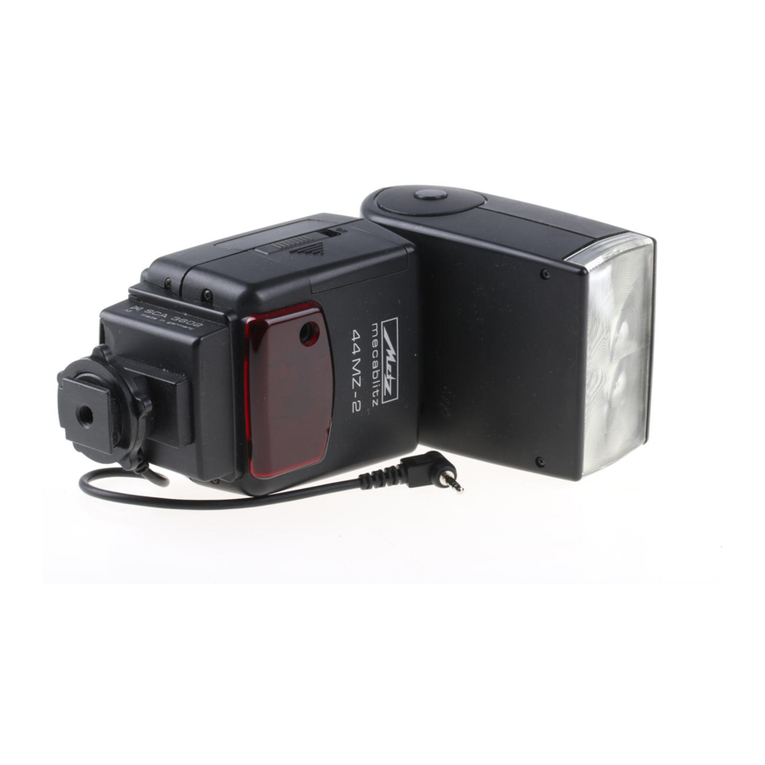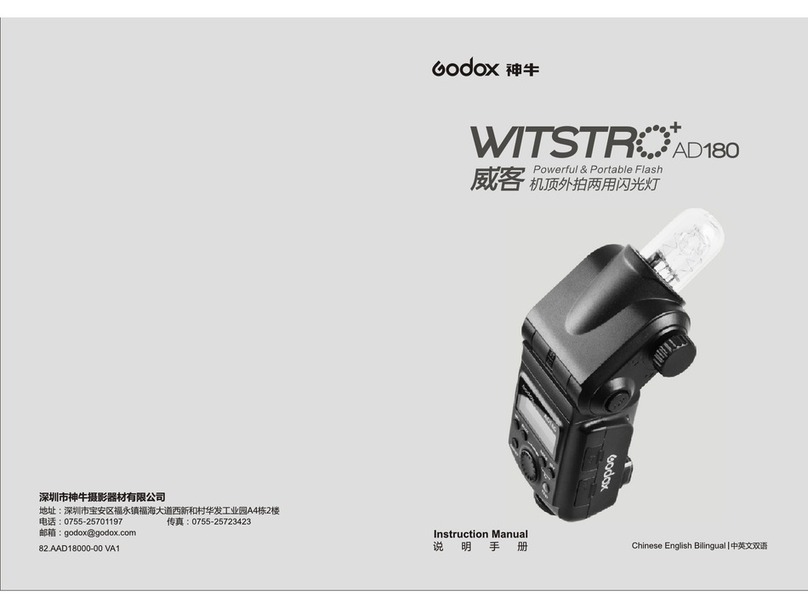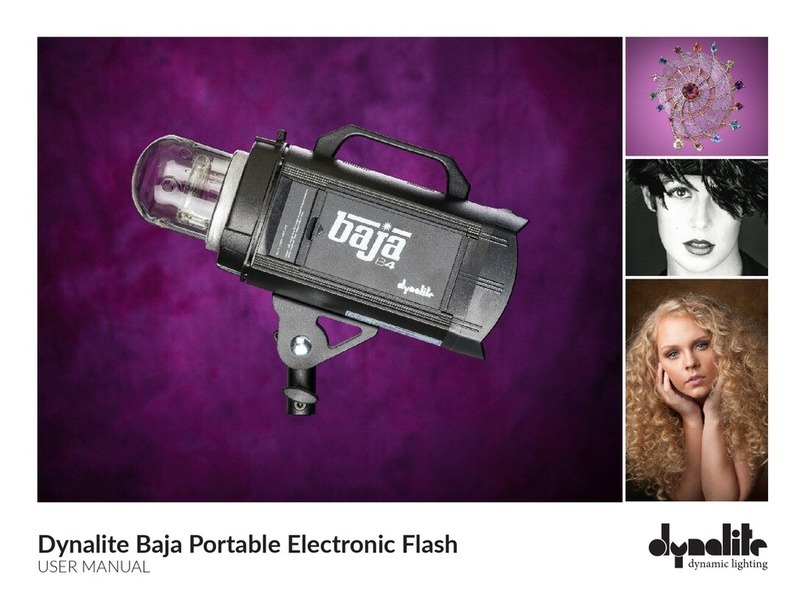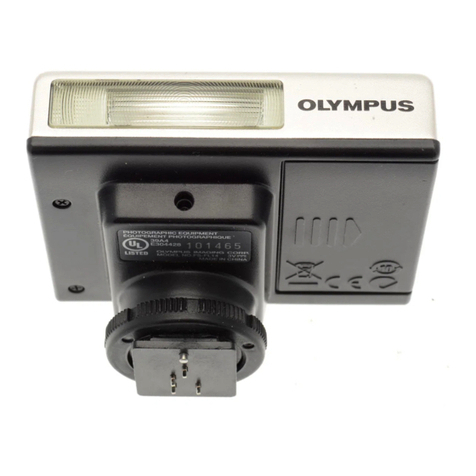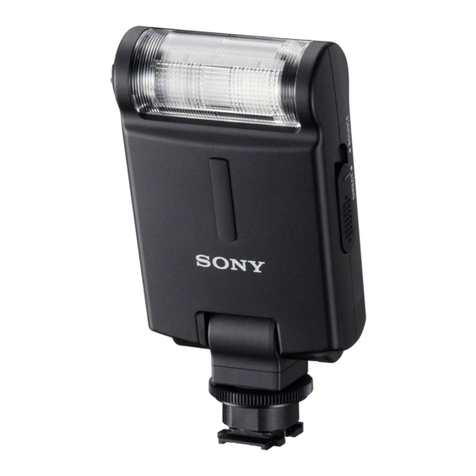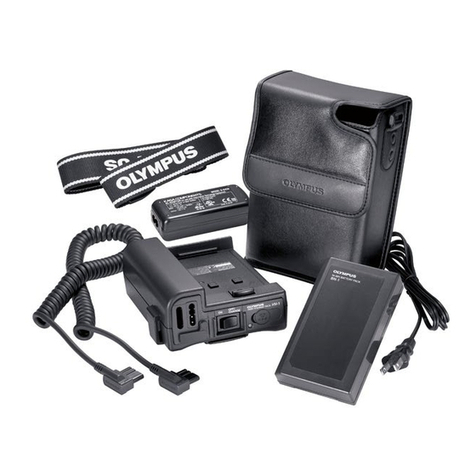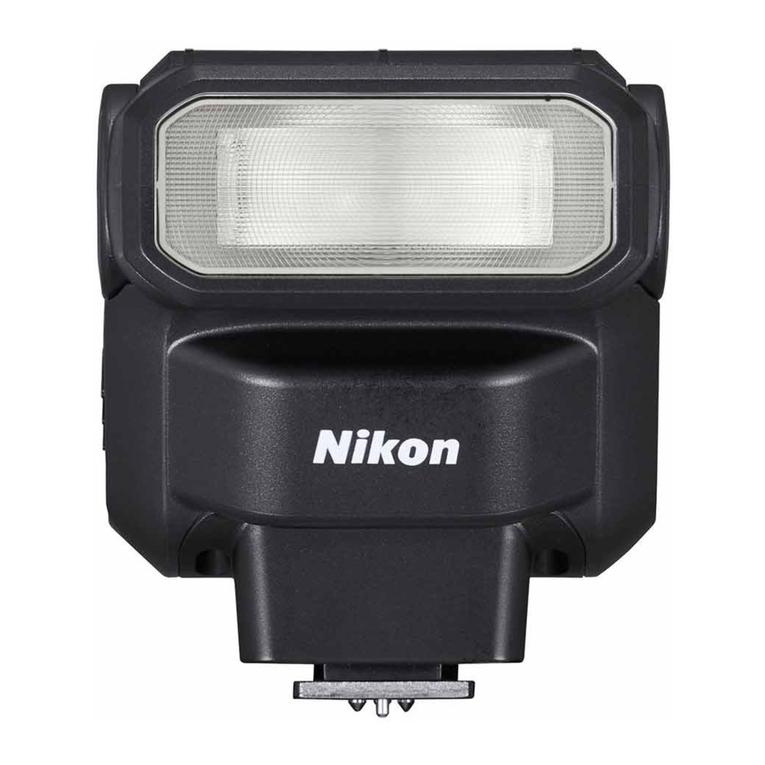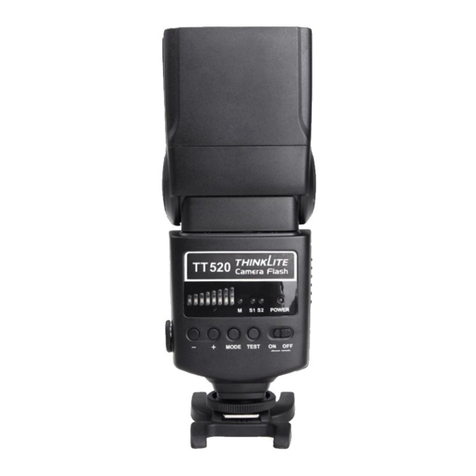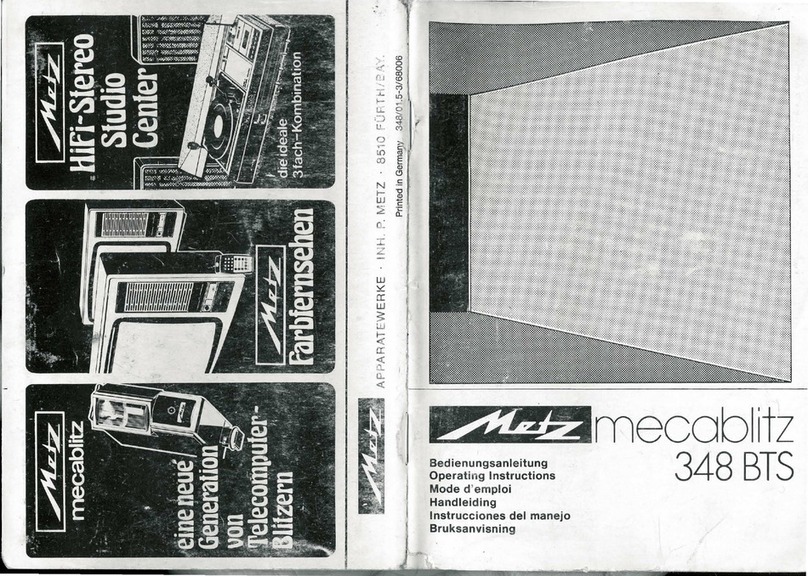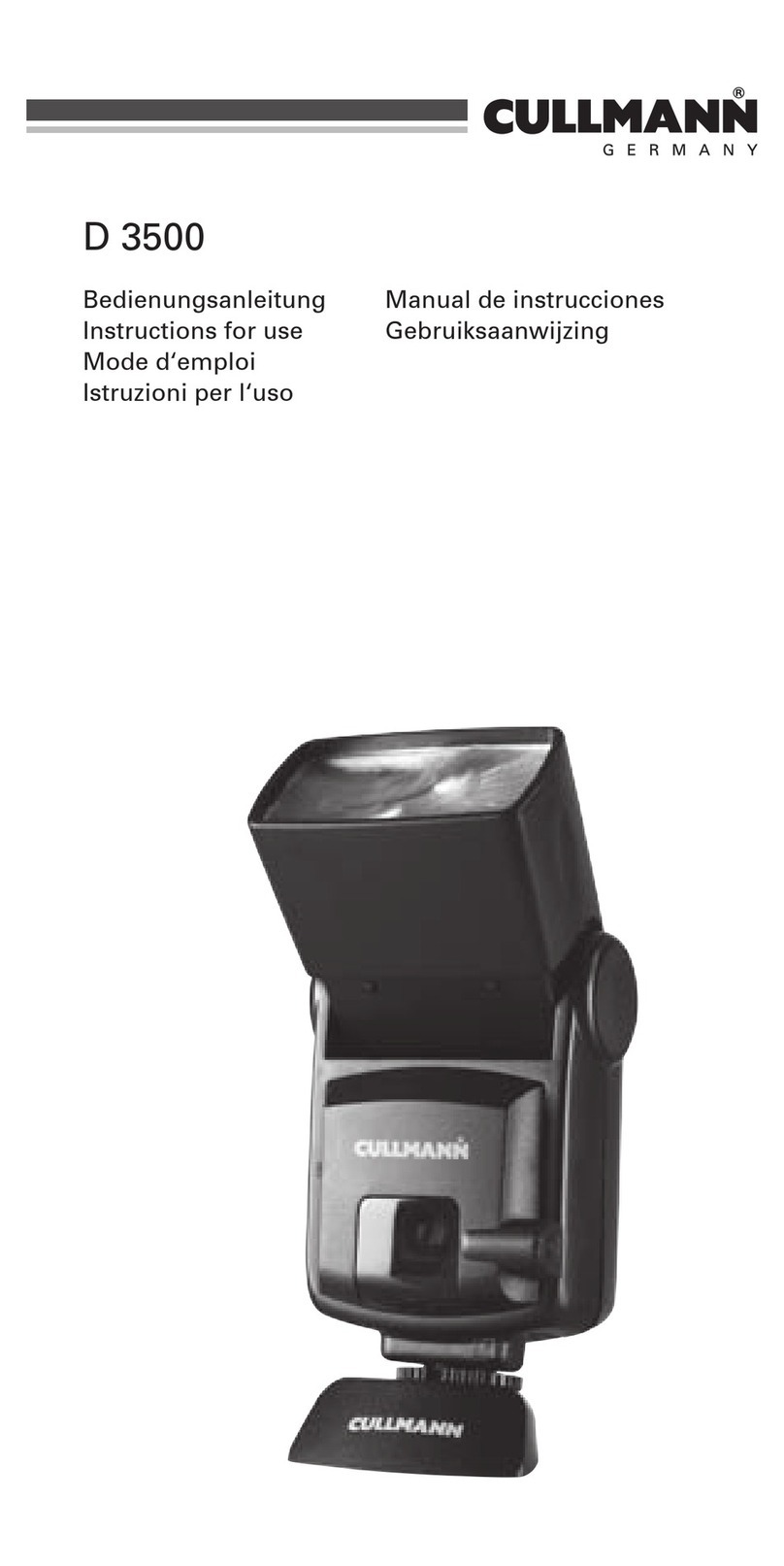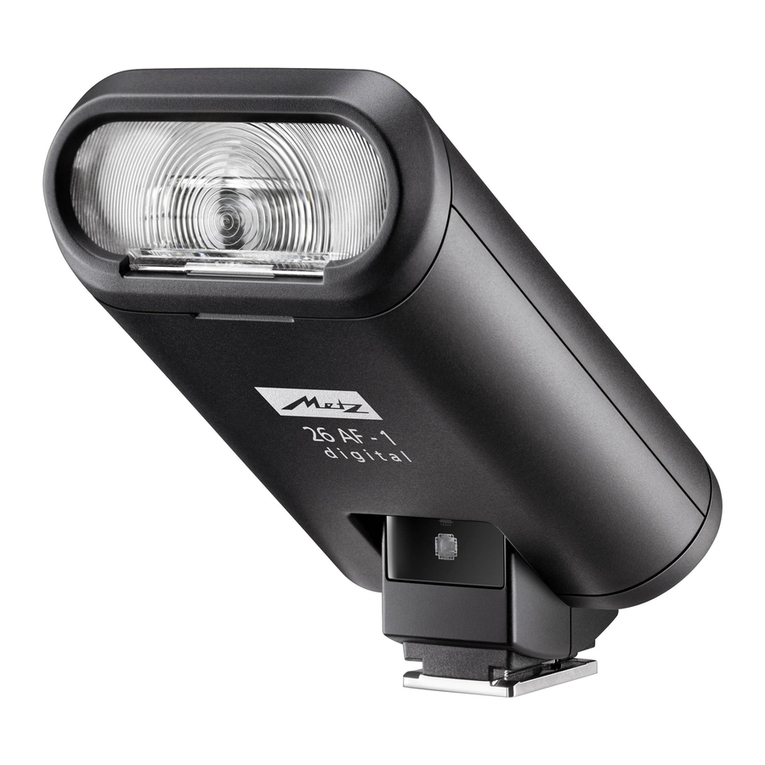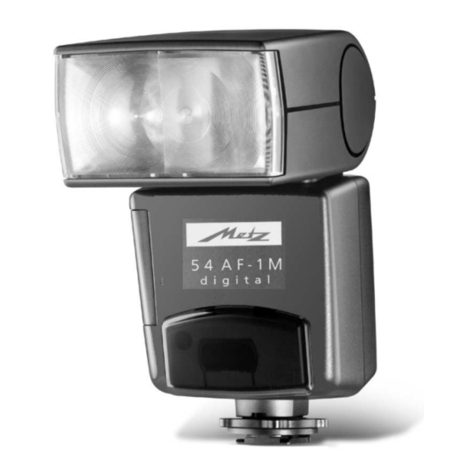Priolite M500 User manual

PRI
O
LITE GmbH / Gattinger Str. 7 / D-97076 Würzburg / Tel +49(0)931 20700000 / eMail [email protected] / Web http://www.priolite.com
Instruction manual
Instruction manual
M500
M500

PRI
O
LITE M500 Operating Instructions
PRI
O
LITE GmbH Würzburg - Page 2 - Last revised: December 2013
Introduction.
Dear photographer,
Thank you for selecting the PRI
O
LITE Compact Flash Unit.
As a young, aspiring company, PRI
O
LITE intends to use innovative technologies and its
high-quality products to open up new market segments for professional photography.
Our devices are based on state-of-the-art technology and equipped with carefully selected
components. Our production process is continuously monitored to ensure high quality and
safety standards.
Before using this unit, please read the operating manual and safety instructions carefully to
prevent damage to the device and maintain your warranty.
We wish you many successful years of productive and innovative work with our equipment.
Should you have questions about our products, please contact us!
Best regards, PRI
O
LITE GmbH
Description.
PRI
O
LITE M500 is a radio-controllable compact unit for mains operation with a maximum
output of 500 J. It is available for 230V operation and with multi-voltage technology. The
power output ensues via 6 apertures, accurately controllable in 1/10 steps. Recycle time to
maximum output is less than 2 seconds.
Delivery includes.
1 PRI
O
LITE M500 compact flash unit
1 flash tube (pluggable)
1 cover dome
1 tilting head
1 each power and synchronization cable
1 protective cap for transport
Note: Kits (containing 2 M500 and accessories)
include only 1 synchronization cable per kit.
Intended use.
This compact flash unit is intended for use in professional photography in the studio or on
location. Its purpose is the provision of electrical power for flash generation and flash
generation itself. The unit may not be used for any other purpose.

PRI
O
LITE M500 Operating Instructions
PRI
O
LITE GmbH Würzburg - Page 3 - Last revised: December 2013
Safety instructions.
Compact flash units store energy in capacitors by collecting high voltages, which
creates particular sources of danger. Before using this unit, read the following
safety instructions and always comply with these instructions.
Flash units may not be operated without supervision.
Always use extreme care when handling the flash unit to prevent damage to the flash
tube. A damaged flash tube poses a risk of severe injury or death, as you can come
into contact with the voltage-carrying electrodes. In this case, switch off the unit
immediately and disconnect it from the power supply. For safety reasons, you must
wait at least 5 minutes after disconnecting the unit from the power supply to ensure that
the capacitors have discharged via the internal safety circuit. The same applies to any
type of maintenance work or before transports, which may be undertaken on the unit
only when it has been switched off and disconnected from the power supply after the
waiting period has expired.
Contact with the capacitor voltage is life-threatening; thus, the opening of the casing
and repairs on the compact unit may be carried out only by authorized customer
service personnel.
Only the supplied original PRI
O
LITE cables must be used. No junction boxes may be
used for connecting several flash units. Flash units may be connected only to a power
supply with an intact ground wire. Before each use, check to ensure that the casing as
well as all cables, connectors and sockets are in good, undamaged condition.
Otherwise operation of this device is forbidden; damaged units and/or cables must be
repaired or replaced by authorized customer service personnel.
Flash units may be operated only with a properly mounted cover dome, as halogen
lamps and/or flash tubes can explode due to the development of overpressure.
It is particularly important to protect the flash unit from moisture, splash water and
impacts during use or transport. This unit is not designed for operation in dusty
environments. Flash systems may not be used in potentially explosive areas; to prevent
the risk of fire, do not store flammable materials (e.g. decorative materials, paper, etc.)
in the immediate vicinity of the flash units.
Do not insert any objects into the ventilation slots, power sockets or synchronization
sockets. The ventilation slots must be kept clear during operation.
Flash units mounted on pantographs or ceiling systems must be doubly secured
against falling.
Do not flash into your eyes from a short distance (under 5 meters), as this can injure
your eyes. Do not look directly into the flash reflector; the flash could be inadvertently
triggered.
Ventilate closed rooms regularly to prevent illegal ozone levels, which can be
generated by the use of high-performance flash units.

PRI
O
LITE M500 Operating Instructions
PRI
O
LITE GmbH Würzburg - Page 4 - Last revised: December 2013
Technical specifications of M500.
Output: 500 J
Power supply: 230V / multi-voltage (95-240V, automatic adjustment)
Modeling lamp max.: 300 W halogen, 6.3 mm pin base
Flash recycling time: <2 sec at full power
Flash duration t0.5 (sec): 1/2500
Color temperature (K): 5600
f-stop (1m distance, 7” reflector): 64.2
Weight without tilt head (kg): 3.2
Dimensions (cm x cm): 36 x 17
Code numbers: 02-0500-01 (multi-voltage); 02-0500-02 (230V)
Initial operation.
Set-up and assembly
The compact flash units are equipped as standard with a tilting head. For set-up on tripods,
pantographs or ceiling systems, this is screwed securely onto the appropriate tripod mount
using the locking star screw on the side of the panner.
If the unit is suspended from a pantograph or ceiling rails during operation, a second
secure connection is required in accordance with the applicable safety regulations. It is
recommended that a steel cable suitable for this purpose (not included) be inserted
through the opening of the handle and secured to a suitable lug on the suspension unit.
Adjustment options on the tilting head
You have the following options for adjusting the flash unit:
The inclination angle can be precisely adjusted by means of the large thumbscrew. The
rotation angle (360 °) is set using the tripod mounting screw.
Using the lateral small thumbscrew on the opposite side, the flash unit can be shifted
backwards or forwards in the rail profile; this might be useful for weight compensation
(e.g., when attaching heavy accessories).
To prevent the unit from sliding off the rail and dropping down, the provided 6mm
screw has to be inserted into the provided thread hole on the rear end of the rail.
Attachment and removal of the glass dome
The glass dome may be attached or removed only when the compact flash unit is
switched off and disconnected from the power supply. Always ensure that the flash
tube and modeling lamp remain intact and undamaged!
The cover dome is attached to the four pre-mounted springs. Place the cover dome so that
it is level and push it gently down until it locks into place audibly. To remove the cover
dome, tilt it slightly so that it detaches from two of the spring mounts. Then gently pull the
cover dome straight up.

PRI
O
LITE M500 Operating Instructions
PRI
O
LITE GmbH Würzburg - Page 5 - Last revised: December 2013
Connection of accessories
The compact flash unit must always be set up only at its final usage site and the
corresponding light modifier attachment (reflector, soft box, umbrella, etc.) mounted before
the unit is put into operation. Accordingly, the compact flash unit must always be switched
off before the unit is repositioned or the light modifier is changed.
After longer periods of operation the flash unit and the attached accessories
(particularly reflectors) can become very hot. To avoid burns upon contact, you
should use suitable heat guards when handling the equipment or wait until it has
cooled down. Due to the heat build-up, the compact flash unit must not be
operated in the vicinity of flammable objects. Sufficient safety clearance with
regard to decoration for photographic purposes must be ensured.
Connection of reflectors
To attach reflectors or softboxes, the clamps are put into the open position by pressing the
reflector lever against the spring force until it hits the stop and keep it there. Now place the
accessory evenly and flush to the unit (for accessories with Bowens S-type adapter, place
the three flanges of the accessory that they fit into the corresponding recesses). Do not tilt
accessory during this process. Then return the lever to its initial position moving with the
spring force to lock the accessory into place. To remove the accessory, hold it firmly
(caution - it could be very hot!), press the lever against the spring force to unlock it and
remove the accessory.
The system is generally compatible with most reflectors of the Bowens / S-Line as well as
for HENSEL reflectors, the clamps fit around the raised edge of the reflector from the
outside. Should you have any questions concerning compatibility, please contact us.
Connection of softboxes
The PRI
O
LITE softboxes have a connector plate with 3 flanges (Bowens / S-Line
principle). The flanges are inserted into the appropriate recesses as described in the
“Connection of Reflectors” section above.
This unit is compatible only with the softboxes of the Bowens / S-Line.
Umbrella attachment
The umbrella to be attached is inserted into the rail at the bottom of the compact flash unit
to the desired length and locked in place with the knurled screw.
Acclimatization
If the flash unit is to be set up at a new location with a different humidity level and/or
temperature, the unit should stand for a while before operation in the room in which it is to
be used. This should prevent the formation of leakage current which can develop due to
precipitation.
Fuse protection
Outlets in the building should be equipped with at least 10 A fuse-protected power sockets.
For fuse protection of the flash unit, please refer to section Maintenance.

PRI
O
LITE M500 Operating Instructions
PRI
O
LITE GmbH Würzburg - Page 6 - Last revised: December 2013
Power connection / Switching on and off
M500 compact flash units are intended for 230V operation (230V version) or world-wide
operation (multi-voltage version that automatically adjusts to the respective mains voltage
(230V/115V)). The power cable included with delivery is plugged into the power socket at
the lower back and then connected to the mains socket. Now the device can be turned on
and off with the main switch, which is located in extension of the rail profile.
Flash units may be connected only to a power supply with an intact ground wire.
Overheating
All units are equipped with a fan to prevent damage to the flash tube and the unit itself
during long series of flashes. Nonetheless, should overheating occur, an error message
will appear on the LED display. The error message will be reset as soon as the unit has
cooled down.
M500
Operating Panel
Schematic
panel diagram with
function boxes

PRI
O
LITE M500 Operating Instructions
PRI
O
LITE GmbH Würzburg - Page 7 - Last revised: December 2013
Functions on the operating panel.
PILOT function box (modeling lamp)
The operating mode of the modeling lamp is selected using the three buttons arranged in a
column on the left. The active mode is indicated by the relevant control LED lighting up:
Full: The modeling lamp burns continuously at full power (max. 300 W).
Free: The modeling lamp can be adjusted independently of the flash output. To do this,
hold down the “Free” button and set the desired output using the control knob (5.0
- 10).
Prop: The modeling lamp output is adjusted proportionally to the selected flash power
output.
The modeling lamp must not be used as a substitute for studio lighting; it is only
an aid for focusing the lens and to estimate the light and shadow progression of
the flash.
Control knob (adjustment of flash power and modeling lamp in “free” mode)
The control knob is used to set the desired flash power in 1/10 steps over a range of 6
aperture values from 5.0 to 10; the values are shown on the LED display.
If the “Free” option is selected for the modeling lamp, the modeling lamp can also be freely
adjusted here (see above). Upon release of the “Free” button, the LED display
automatically returns to displaying the flash power.
RADIO function box (radio operation)
For remote radio operation, use the three radio buttons at the right.
On: If the ON button is activated (control LED lights up), the flash can be triggered and
controlled by radio. The additional entry of TEAM and ID is required.
Team/ID: Select Team A, B, C, or D and an ID from 1 to 9 by using the control knob and
pressing and holding down the relevant button. The selections will be shown on
the display. A maximum of 36 flash units can be individually controlled with the
appropriate combinations (4 x 9).
Team and ID can be changed only when the radio function is “ON”.
AUXILIARIES function box (additional functions)
Slave If the “Slave” button is activated, an external flash is triggered via the photocell
(see the section entitled “Flash triggering” below).
FC IF FC (Flash Check) is activated, the modeling lamp goes out immediately after
the flash and lights up again only after the unit has charged up to the selected
level. This ensures correct charging as well as renewed flash readiness. The flash
control ensures that the flash lamps light up when several flash units are used.
Audio: When the “Audio” button is activated, flash readiness is indicated by an acoustic
signal.

PRI
O
LITE M500 Operating Instructions
PRI
O
LITE GmbH Würzburg - Page 8 - Last revised: December 2013
Flash triggering.
The flash can be triggered using the following options:
Flash triggering via the synchronization cable
The compact flash unit is connected to the camera using a synchronization cable with a 3.5
mm jack via the “Sync” socket. The synchronization voltage is 5 V.
The synchronization circuit was designed using state-of-the-art semiconductor technology.
This enables reliable flash triggering even in older cameras with mechanical contacts.
However, due to the large number of different electronic circuits used in the cameras for
synchronization control, we cannot assume any liability for any damage to the camera
triggering the flash. You should therefore contact the camera manufacturer before using
any cameras that are not generally commercially available.
Flash triggering via the photocell
The compact flash unit can also be triggered via the built-in photocell. Triggering then
occurs when a flash from another unit “strikes” the first unit. This operating mode is
activated by pressing the Slave button (control LED is on).
The photocell is designed as an impulse photocell. Thus, it works only when the striking
flash has a higher f-number than the ambient light. You must therefore ensure that no
excessively strong external light falls on the photocell. If this cannot be avoided, another
method of triggering the flash must be selected.
Flash triggering via radio remote control
The compact flash unit is equipped with a built-in bi-directional radio module. To trigger the
flash via radio, the radio remote control must be mounted on the hot shoe of the camera
and then switched on using its main switch. You must also ensure that the Team/ID
settings on the radio module and the flash unit match. The flash is triggered by activating
the camera shutter.
Flash triggering via the TEST button
The flash can also be manually triggered on the unit by pressing the “TEST” button.
Flash readiness
Flash readiness is signaled by
the “TEST” button lighting up
the glass dome over the photocell lighting up
relighting of the modeling lamp when FC is activated
an acoustic signal when the audio function is switched on
Automatic Power Drop (APD)
If the power setting is reduced, the stored energy is internally dissipated. No flash is
triggered during this process. Compact flash units that are switched off are automatically
discharged. It is also possible to reduce the energy quickly to the current value by
triggering a test flash.

PRI
O
LITE M500 Operating Instructions
PRI
O
LITE GmbH Würzburg - Page 9 - Last revised: December 2013
Maintenance.
The following maintenance work may be carried out by the users themselves: replacing the
fuses, the halogen modeling lamp and the plug-in flash tube.
Before each of these procedures, the flash unit must be switched off and
disconnected from the power mains. You must then wait at least 5 minutes for
safety reasons to ensure the discharge of the capacitors via the internal safety
circuit.
Furthermore, before replacing the modeling lamp and/or the flash tube, you must
wait for them to cool down.
To remove the cover dome, see the instructions above. The flash tube and modeling
lamp must not be touched during this procedure (danger!). Always use extreme
caution when handling an exposed halogen lamp and/or flash tube due to the
existing overpressure.
Replacing a fuse
Fuses must never be “mended” or bridged. Use of the wrong type of fuses carries an
increased risk of explosion of the halogen lamp when the spiral filaments burn out. The
fuse ratings required depend on the type of halogen modeling lamp used. For 300 W
halogen lamp use 10A time-lag fuses to be ordered from PRI
O
LITE. For replacing fuses,
pull out the small drawer with the fuse symbol on it between main switch and main socket.
Replacing the modeling lamp
To replace the halogen lamp, carefully pull it out of the plug contact and replace it with a
new one.
You must not touch the glass of the new halogen lamp with your hands, as this
greatly shortens the service life of the lamp and increases the risk of explosion. A
halogen lamp with a maximum of 300 W may be used as the modeling lamp.
Before putting it into operation, it must be ensured that the new modeling lamp has
proper fuse protection in accordance with the applicable regulations (see “Replacing
fuses” above).
Replacing the flash tube
The compact units are equipped with a plug-in Omega flash tube which can be replaced by
the user if it becomes defective.
If the glass of the flash tube is broken, do not touch the electrodes in any case when
you are replacing the flash tube! In this case you must use fully insulated pliers to
remove the damaged flash tube!
First, unhook the trigger wire. Then, carefully pull the flash tube out of the plug connector
and replace it with a new one (to be ordered from PRI
O
LITE). Then re-attach the trigger
wire. Before using the unit once again the glass dome is to be mounted for safety reasons.

PRI
O
LITE M500 Operating Instructions
PRI
O
LITE GmbH Würzburg - Page 10 - Last revised: December 2013
Regular inspection and repairs
Except for the work described in the “Maintenance” section, users may not perform any
repairs on flash systems; these are to be carried out exclusively by authorized customer
service personnel.
In accordance with country-specific safety regulations, inspection and maintenance of
electrical systems and devices should be carried out at regular intervals. We recommend
an annual inspection of the units to ensure operational safety and reliability and to maintain
the value of the system.
Return to customer service
To prevent damage during transport and to ensure optimal protection of the units, we
recommend that you always ship the devices in the original packaging.
Disposal
Disused and defective units must be disposed of in the electronic recycling.
Accessories.
The following accessories are available:
Radio remote control
Lightformers (Reflectors, Grids, Softboxes, Octaforms, Striplights, Umbrellas)
Stands, Bags
Glass Domes, Flashtubes, Halogen lamps, Sync/Power cables

PRI
O
LITE M500 Operating Instructions
PRI
O
LITE GmbH Würzburg - Page 11 - Last revised: December 2013
Declaration of Conformity.
The company
PRI
O
LITE GmbH
Gattinger Str. 7
D-97076 Würzburg
Germany
declares that the product
M 500
is in conformity with the following standards:
EN 61000-6-3:2007
EN 61000-6-2:2005 and
DIN EN 60335
according to the provisions of the Directives
2004/108/EG and 2006/95/EG
Place and date of issue:
Würzburg, 01-Juli-2013
Dipl.-Ing. Joachim Renschke
Geschäftsführer / Managing Director PRI
O
LITE GmbH
Other Priolite Camera Flash manuals

